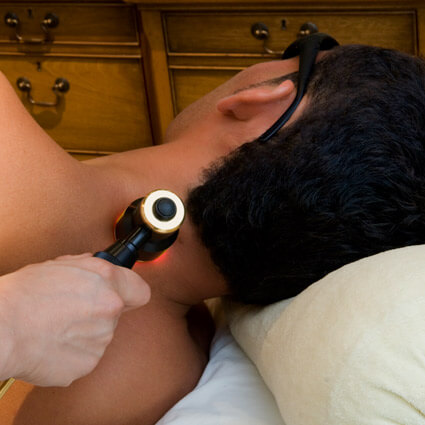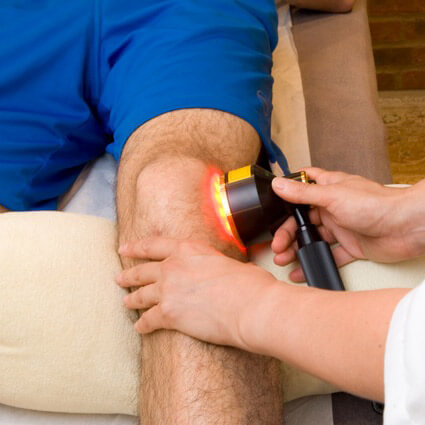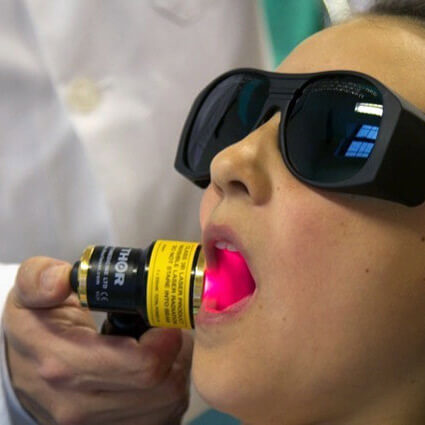 PBMT delivers both local (direct) and systemic (indirect) benefits:
PBMT delivers both local (direct) and systemic (indirect) benefits:
- Direct effects occur when light energy interacts with injured or inflamed tissues, enhancing local healing.
- Systemic effects arise when circulating cells—such as lymphocytes or stem cells—absorb light energy as they pass through illuminated tissue, potentially modulating the immune response and enhancing tissue repair at distant sites.
In one preclinical study, PBMT applied to bone marrow (not the heart) in pigs reduced cardiac damage after a heart attack. The effect was attributed to enhanced mobilisation of stem cells that contributed to tissue repair.
Clinical Case Studies: Evidence-Based Outcomes
The following case scenarios are presented as illustrative examples of how clinical-grade PBMT may be applied in practice. These examples are not prescriptive treatment plans but serve to give insight into the therapy’s versatility. Every patient’s health status, healing capacity, and treatment needs are unique. Therefore, PBMT protocols should always be tailored to the individual after appropriate clinical assessment. Recovery times and outcomes may vary based on factors such as age, comorbidities, and severity of injury.
These case summaries align with broader trends in the literature, where PBMT has demonstrated efficacy in reducing inflammation, accelerating tissue regeneration, and improving functional outcomes across a variety of conditions (Hamblin, 2017; Bjordal et al., 2006; Chow et al., 2009).
1. Meniscal Tear Healing
- Condition: Posterior meniscal tear
- Treatment: ~20 sessions over 3 months
- Result: MRI-confirmed healing; pain-free movement
- Comment: Given the poor vascularity of cartilage, this recovery is especially notable.
 2. Bone Fractures
2. Bone Fractures
Case 1: Metatarsal fracture with haematoma
- Protocol: 2-3 sessions/week for 4 weeks
- Outcome: Full mobility restored, no cast or crutches needed
Case 2: Shoulder fracture
- Protocol: Regular PBMT while awaiting surgery
- Outcome: Spontaneous bone healing; surgery deemed unnecessary
3. Hamstring Injury
- Condition: Sports-induced tear and bruising
- Protocol: 4 sessions in one week
- Outcome: Rapid reduction in haematoma and pain; continued sessions for tendon repair
4. Cervical Disc Herniation
- Condition: C6-C7 disc bulge
- Timeline: 8 months of PBMT
- Outcome: MRI confirmed full resolution; surgery avoided

5. Skin and Inflammatory Conditions
- Conditions: Psoriasis, eczema, acne
- Results: Noticeable reduction in inflammation and symptoms after 4-6 sessions
6. Tendinopathies and Bursitis
- Conditions: Rotator cuff inflammation, olecranon bursitis
- Outcome: Decreased swelling and improved mobility in as little as 2 weeks
A Therapy Backed by Science
PBMT is among the most rigorously researched non-invasive therapies in modern medicine:
- 11,000+ peer-reviewed studies
- ~2,000 human clinical trials
- 300-500 new publications annually
Disciplines employing PBMT include orthopaedics, neurology, dermatology, sports medicine, rheumatology, and dentistry.
Conclusion: Precision Light for Precision Healing
Photobiomodulation therapy, particularly with the medical CE-marked systems, offers a precise, effective, and scientifically grounded approach to treating musculoskeletal pain, inflammation, and tissue injury. It is not a cure-all—but when correctly applied, clinical-grade PBMT can dramatically enhance the body’s innate healing mechanisms.
If you’re navigating chronic pain, recovering from injury, or looking to support natural healing, PBMT may be an ideal adjunct to your care.
